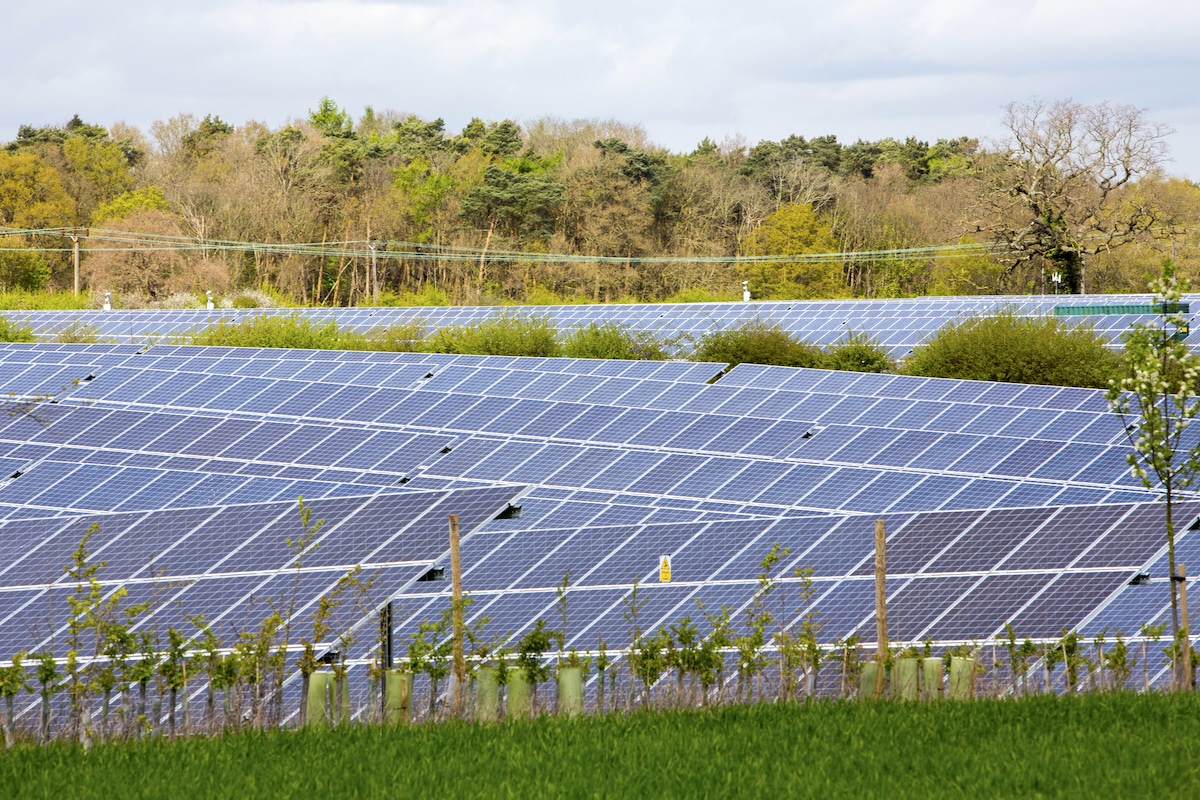Well-Managed Solar Parks Could Boost Pollinators in UK, Study Says

 Why you can trust us
Why you can trust us
Founded in 2005 as an Ohio-based environmental newspaper, EcoWatch is a digital platform dedicated to publishing quality, science-based content on environmental issues, causes, and solutions.
When combined with green spaces, solar panels can provide more benefits than generating clean energy.
According to a new study, led by Lancaster University scientists in collaboration with the University of Reading, well-managed solar parks that feature solar panels and vegetation could boost pollinator populations and biodiversity. The researchers published their findings in the journal Ecological Solutions and Evidence.
The team used field observations and landcover data to track the impact that solar park plants have on pollinators. They surveyed 15 solar park sites around England, noting plant resources and the surrounding landscape characteristics, such as any wooded areas nearby or whether surrounding landscapes were well-connected or disconnected.
Overall, they observed 1,397 pollinators across at least 30 species. Butterflies were the most-observed pollinator, making up 64% of all observed pollinators. Butterflies were also found at all 15 sites, the only type of pollinator present at all the solar parks in the study.
The researchers spotted 171 hoverflies (12% of the total), 161 bumblebees (12%), 157 moths (11%) and just nine honeybees, making up less than 1% of the observed pollinator species at the solar parks. They did not record any observations of solitary bees.
The study authors noted that the solar parks tended to support generalist pollinators, which visit a variety of plant species, over specialist pollinators, which rely on few or only one plant species. Still, they did find a diverse range of generalist pollinators at solar parks with various flowering plants.
Solar parks with more diversity in on-site flowering plants were linked to a wider range of pollinator species and a greater abundance of pollinators. According to the study, floral species diversity was the most influential variable on pollinators in the study.
In general, researchers observed the most abundance and highest species diversity of pollinators in July. But aside from plant diversity and month, another factor had a significant impact on many types of pollinators: the surrounding landscape.
According to the study, solar parks were especially beneficial to pollinators in areas with disconnected landscapes. The authors noted that this could be because areas with well-connected landscapes rich in hedgerows and trees could be more attractive to pollinators because they offer a wider range of resources.
“We’ve shown that through management decisions such as planting a variety of flowering plants, solar parks can support insect pollinators and also those communities can be relatively diverse and abundant — particularly in those landscapes where there are few hedgerows and wildflowers for pollinators to depend on,” Hollie Blaydes, lead author of the study, said in a statement.
This means solar parks could not only be sites for generating energy, but they could double as pollinator habitats in areas that lack natural resources to support pollinators.
Subscribe to get exclusive updates in our daily newsletter!
By signing up, you agree to the Terms of Use and Privacy Policy & to receive electronic communications from EcoWatch Media Group, which may include marketing promotions, advertisements and sponsored content.

 233k
233k  41k
41k  Subscribe
Subscribe 




